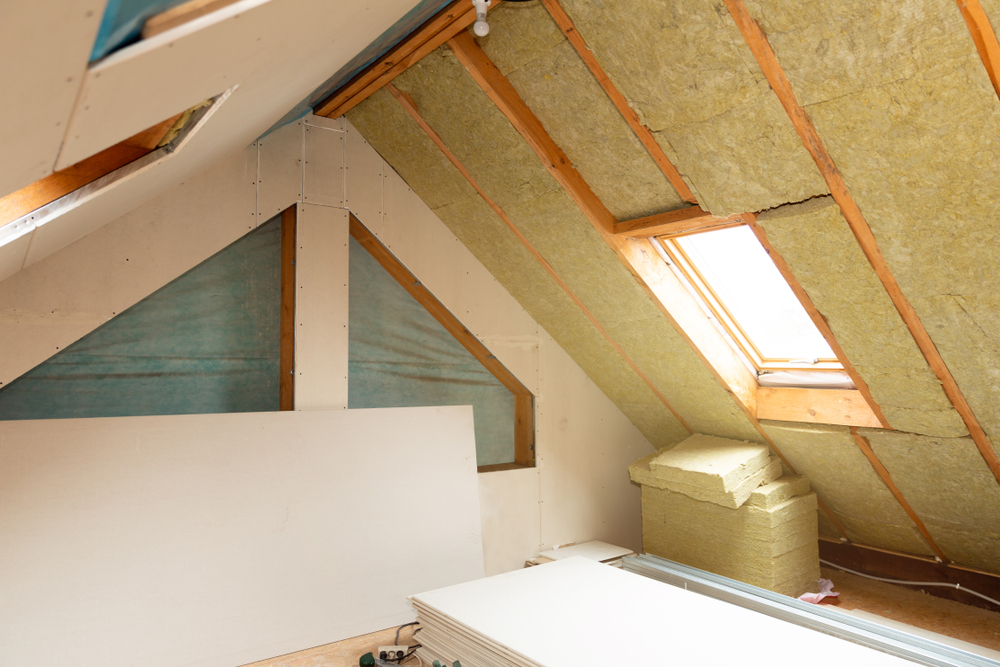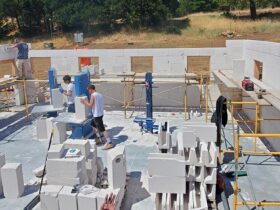Installing insulation in your attic will help improve the energy efficiency of your home and drive down electricity costs. Whether you’re simply wanting to improve your existing home insulation or are thinking about converting your attic into a liveable space, installing attic insulation is a smart move. Check out our guide on attic insulation installation in your attic below, or get in touch with the team at Pricewise Insulation directly for tailored advice.
Step-by-Step Guide to Installing Attic Insulation
The way you insulate your attic will depend on what you intend to use the space for. Here’s how to approach it:
Insulating Unused Attics
Many homes, especially in Australia, don’t use the space between the ceiling and the roof, known as the attic. Even if you don’t plan to use this area for storage or living, insulating it is still important. Proper insulation reduces heat loss and heat gain, helping your home stay at a comfortable temperature. This will make your home more energy-efficient and save you money on your energy bills.
You can install ceiling insulation batts (large pieces of insulation) between the ceiling joists. If the plaster hasn’t been installed yet, you can do this from below in new homes. In older homes, the batts can be placed through the attic hatch or by removing some roofing material.
Insulating an Attic Conversion
If you’re turning your attic into a room, you’ll need to make sure it’s well insulated to keep it comfortable, safe, and up to building standards. Most homes already have roof sarking, which is a layer under the roof material like metal sheets or tiles.
When insulating an attic conversion, place insulation batts between the roof joists. It’s important to leave a small gap between the batts and the sarking. After that, you can attach a reflective insulation product, like Kingspan Insuliner, to the rafters. This creates another layer of insulation and reflects heat away, but remember to leave an air gap between the reflective material and the batts.
Types of Attic Insulation
There are two main types of insulation used for attics:
- Bulk insulation: This includes materials like glass wool batts, which trap air to block heat transfer.
- Reflective foil insulation: This type reflects heat away, helping to keep the attic cooler.
If you’re converting your attic into a living space, you might also want to install acoustic insulation under the floor. This helps reduce noise from moving around in the attic that could disturb the rooms below.
Understanding R-Value
The R-Value measures how well insulation resists heat flow. The higher the R-Value, the better the insulation will be at keeping your home warm in winter and cool in summer. A higher R-Value can also lead to more energy savings.
When insulating your attic, check local building codes to see what the minimum R-Value is for your area. You’ll want to meet or exceed this to make sure your home is energy efficient.
How Much Insulation Do You Need?
The amount of insulation you need will depend on the size of your attic and how you’re planning to install it. You can measure the square footage of your attic to figure out how many batts or rolls of insulation you’ll need. There are calculators online that can help you estimate the right amount.
Tips for Installing Attic Insulation
If you decide to install the insulation yourself, here are some important safety and effectiveness tips:
- Turn off the power: Before starting, turn off your home’s power. Use a battery-powered light if needed. If you see any loose or damaged electrical wires, have an electrician inspect them.
- Seal air leaks: Before placing insulation, make sure to seal any gaps where air could escape between the attic and the rooms below. Pay special attention to areas around pipes, ducts, and light fixtures.
- Don’t compress the insulation: Bulk insulation works best when it’s not compressed. Flattening it reduces its ability to insulate properly.
- Ensure a snug fit: Insulation batts should fit snugly between the joists. For tricky spaces like around windows or doors, cut pieces to fill in any gaps.
- Maintain ventilation: Make sure to keep air vents open. Proper airflow helps prevent moisture buildup, which can lead to mold and poor air quality.
- Handle dust carefully: Attics can be dusty, especially in older homes. Wear a dust mask and ensure good ventilation while you work.
- Be cautious around recessed lights: Keep insulation away from recessed lighting to prevent overheating and reduce fire risk.
- Wear safety gear: Protect yourself by wearing long sleeves, gloves, safety glasses, boots, and a dust mask. Also, bring water with you to stay hydrated while working in the attic.
Need Help with Your Attic Insulation?
If you’re looking for professional help, EcoHome Insulation in Melbourne offers top-notch services. They’re highly experienced and can handle all your insulation needs. You can reach them at [email protected] for more details.
Ready to Get Started?
Now that you know how to insulate your attic, you can purchase all the materials you need from Pricewise Insulation’s online store. If you have questions, their team is available at 1300 729 639 to provide expert advice.
Installing attic insulation is a simple and effective way to improve your home’s comfort and energy efficiency. With the right products and methods, you’ll enjoy lower energy bills and a more comfortable living space!





